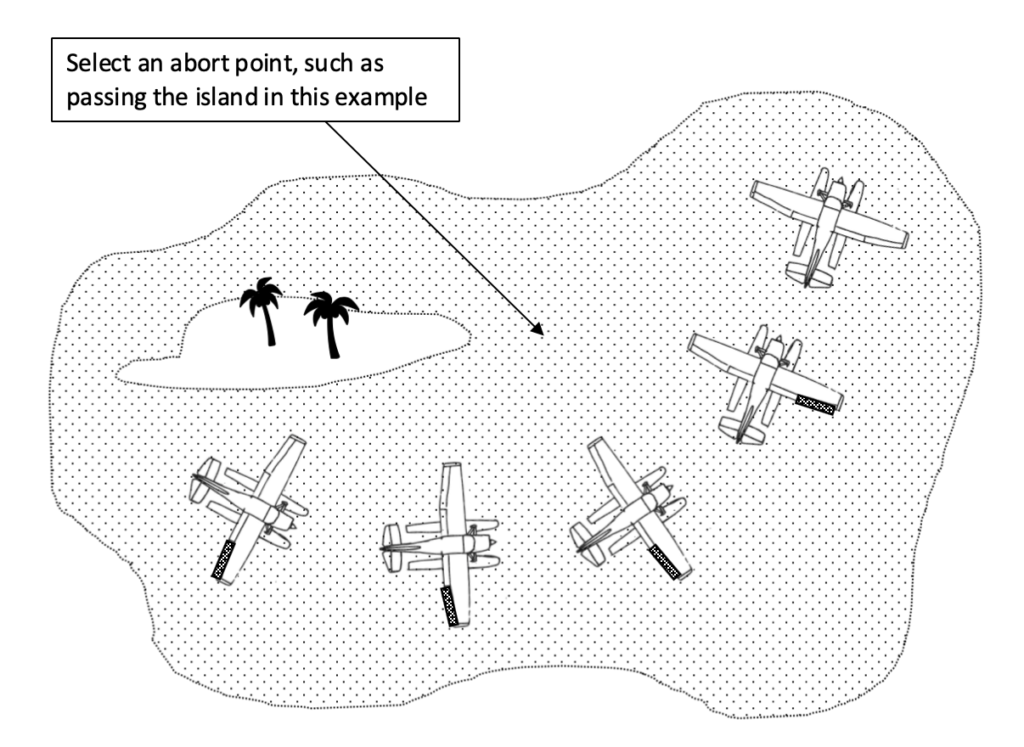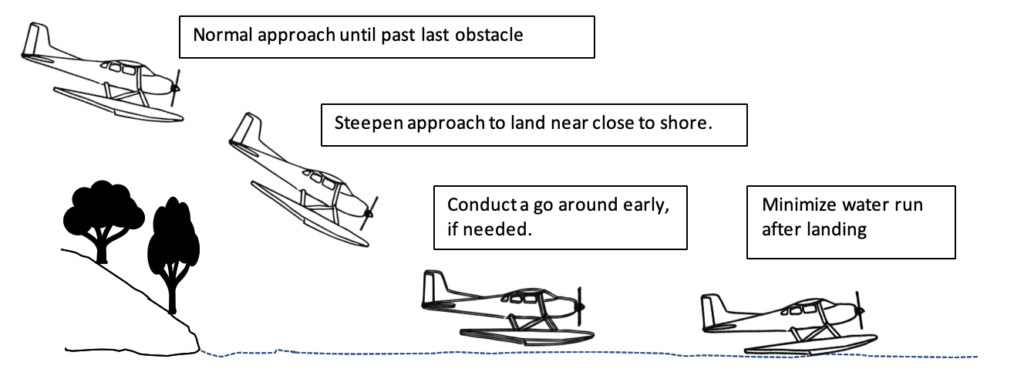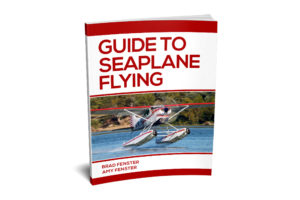Confined Area Takeoff/Landing
Confined area operations in a seaplane are similar to short field operations in a landplane. The idea is to obtain height in as short of distance as feasible to clear any obstacles. There are several techniques that can be used.
Confined Area Takeoff:
The confined area takeoff is similar to the short-field takeoff in a landplane. However, there are a few differences. These differences are outlined below.
- In calm or light wind conditions, the takeoff can be conducted from a step taxi with a turn into the wind. This method should not be tried in windy conditions due to the centrifugal forces combined with the wind lifting the upwind wing.
- An abort point should be established and used. If takeoff speed has not been reached by the abort point, abort the takeoff by reducing power to idle. In order to take off the pilot may need to wait for more favorable conditions, change takeoff locations, offload weight, etc.
NOTE: This procedure has been removed from the FAA requirements as some students were performing the maneuver in other than calm conditions. Unless winds are calm, a high-speed turn from downwind to upwind should be avoided. In windy conditions, a takeoff directly into the wind or with only a slight turn could be likely be accomplished.
Without using the curved path technique, the confined area takeoff is pretty simple. The only option is to use all available waterway, so the aircraft must be as close to the end as possible. Then, on climb out, the aircraft should climb at Vx until clear of obstacles and then Vy. Whenever conducting confined area takeoffs, establish and use an abort point. The abort decision should be made early in the takeoff run. If needed, there are other options to improve chances of a successful takeoff, such as waiting until the wind increases, waiting until the temperature decreases, or offloading personnel and equipment.
Confined Area Landing:
The confined area landing is similar to a short-field landing in a landplane. However, there are a few key items to remember. The pilot should:
- Ensure the there is enough room to take off before landing. Remember, a seaplane can land in an area too small to take off. A flight at a specific ground speed over the anticipated takeoff area can be timed to determine if the takeoff area is sufficient. The time can then be used to compute the distance traveled. For example, at 80 knots ground speed, 4,700ft is covered in 35 seconds, more than enough to takeoff in most aircraft. The requirements for a specific aircraft should be computed. A table is included in the appendix for several speeds and ground distances covered over time.
- Maintain a normal approach until over the last obstacle then land as close to the shore as safely possible. This procedure provides the most useable waterway for landing.
- Land as slowly as safely possible to minimize the ground run.
- Make a go around decision early. If the landing does not look good, a go around should be conducted and the landing attempted again, or an alternate landing site should be selected. A good idea is to make a go or no-go decision before descending below the final obstacle, such as a tree line or cliff.



